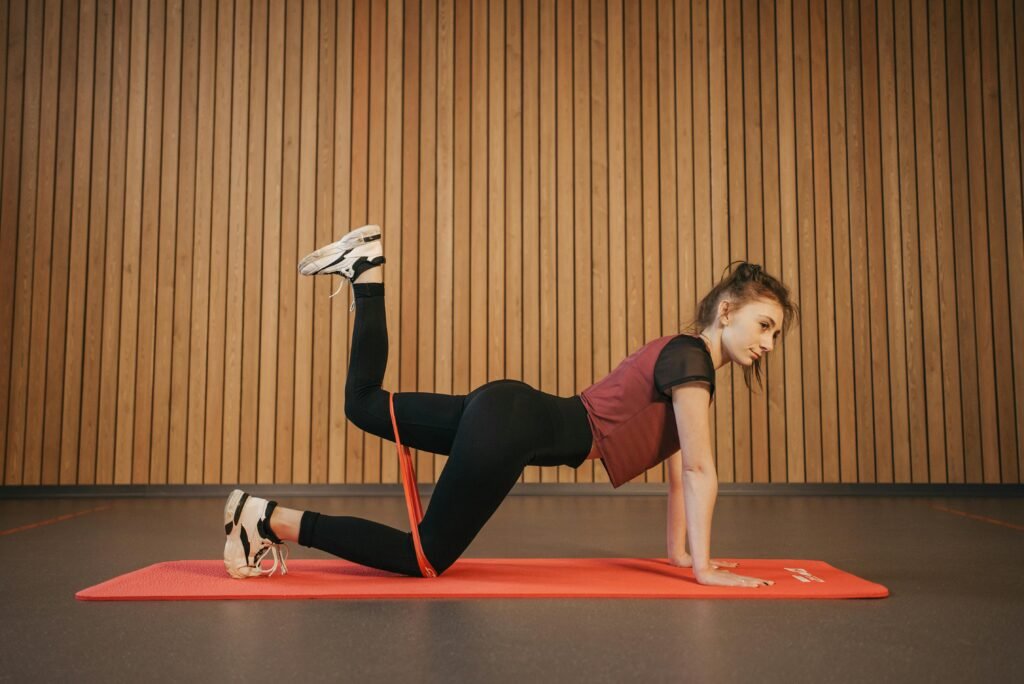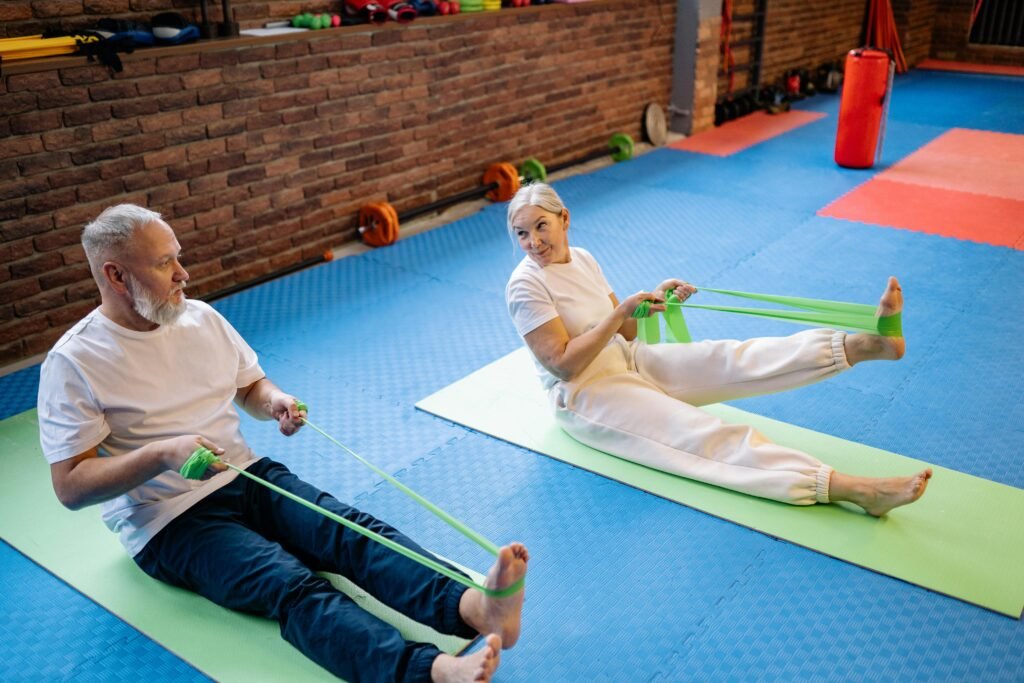Many office workers spend their days hunched over desks, leading to chronic back and neck pain, poor posture, and even long-term spinal issues. However, you don’t need to hit the gym to combat these problems. A simple pull-up bar can be your ally in maintaining a healthy spine and relieving the discomfort that comes with prolonged sitting.

In this article, we’ll guide you through a series of pull-up bar exercises that are perfect for office workers. These movements not only help decompress the spine but also strengthen key muscle groups, improving overall posture and reducing the risk of injury. Let’s get started!

1. Hanging from the Bar (Suspension)
Hanging from the bar is an excellent way to relieve pressure on the lower and upper back. By suspending your body from the bar, you can effectively stretch the spine and surrounding muscles, reducing the strain on the intervertebral discs and improving posture.
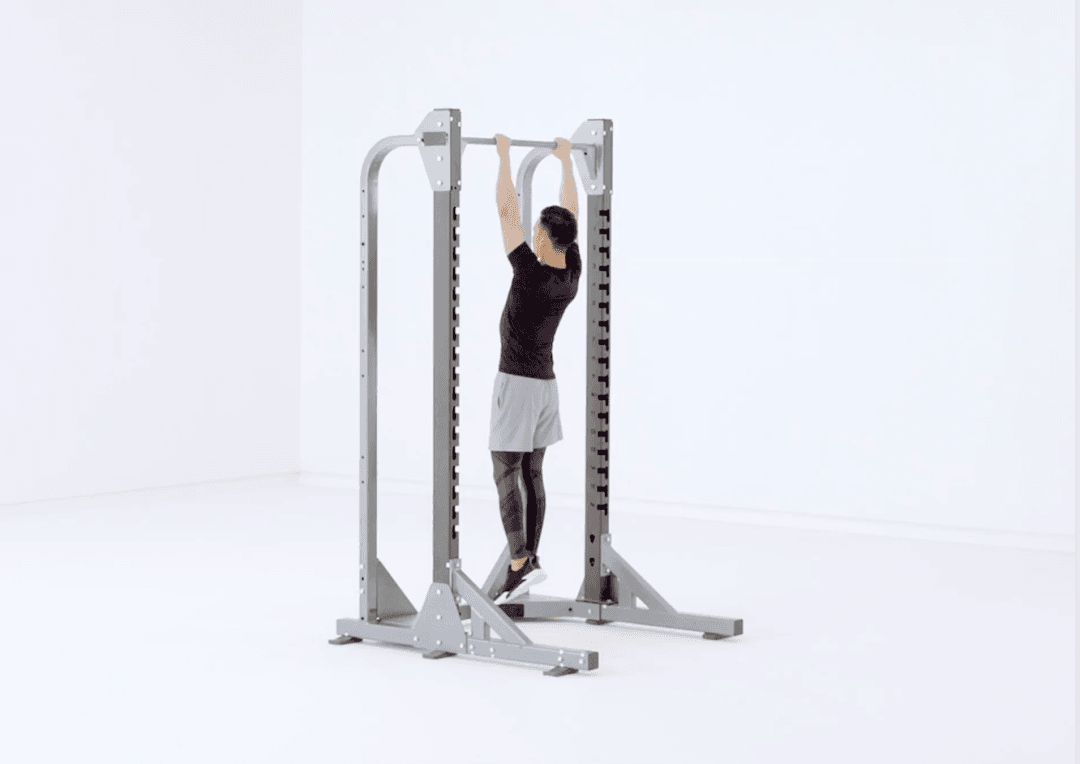
- How to do it:
- Grasp the bar with both hands in an overhand grip, slightly wider than shoulder-width apart.
- Allow your body to hang freely, keeping your shoulders relaxed and your chin slightly tucked.
- Hold this position for 10 seconds, then release. Repeat for 3-4 sets if you’re new to this exercise, or 5-6 sets if you have more experience.
- Tip: If you find your hands getting sore, consider wearing fitness gloves to protect them from blisters and calluses.
2. Shoulder Retraction (Scapular Pull-Ups)
Scapular pull-ups are a crucial exercise that helps you learn how to engage your back muscles properly. This movement strengthens the muscles between your shoulder blades, improving posture and reducing the risk of shoulder and neck pain.
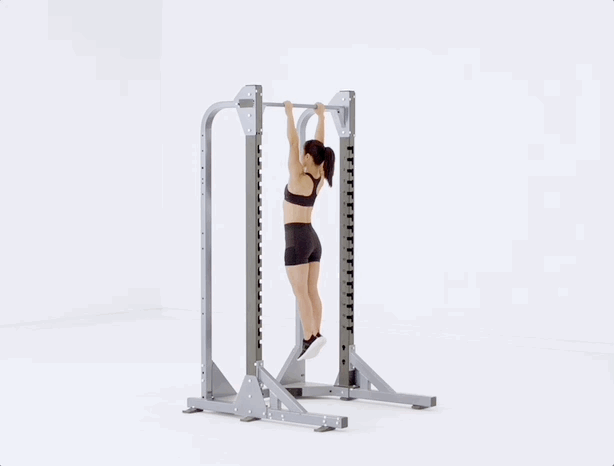
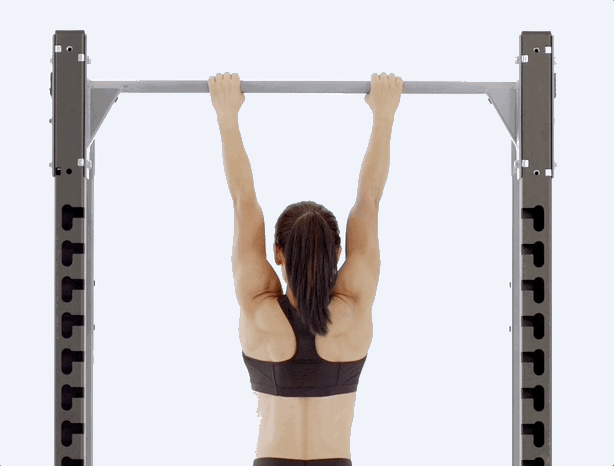
- How to do it:
- Start by hanging from the bar with an overhand grip, slightly wider than shoulder-width apart.
- Without bending your elbows, pull your shoulder blades down and together, lifting your body slightly.
- Hold this position for 2-3 seconds, then slowly lower yourself back down.
- Perform 8-12 repetitions for 3-4 sets. Beginners can start with 6-8 reps per set and 2-3 sets.
- Muscles worked: Middle and lower trapezius, rhomboids, levator scapulae, brachialis.
3. Chin-Ups (Underhand Grip Pull-Ups)
Chin-ups are easier for many beginners because they primarily engage the biceps, making it less challenging than the standard pull-up. This exercise is great for building strength in the back and arms.
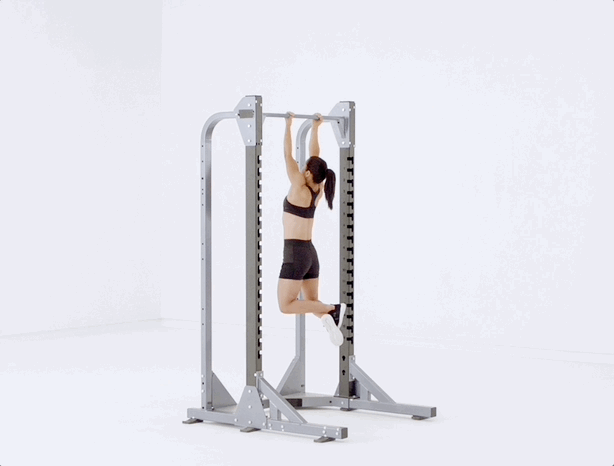

- How to do it:
- Grasp the bar with an underhand grip (palms facing you), slightly narrower than shoulder-width apart.
- Pull yourself up toward the bar, bringing your chin above the bar if possible.
- Lower yourself slowly and repeat for 6-8 repetitions, performing 2-3 sets.
- As you progress, aim for 8-12 reps per set and 3-4 sets.
- Muscles worked: Latissimus dorsi, biceps, triceps, teres major, rhomboids.
4. Standard Pull-Ups (Pull-Ups)
The standard pull-up is a classic exercise that targets multiple muscle groups, including the lats, rhomboids, rear deltoids, and biceps. It’s excellent for building a strong back and improving overall upper body strength.
- How to do it:
- Grasp the bar with an overhand grip, slightly wider than shoulder-width apart.
- Engage your back muscles to pull your body up, leaning back slightly so your chest approaches the bar.
- At the top, squeeze your shoulder blades together, hold for a moment, then control the descent as you lower yourself.
- Perform 8-12 repetitions for 3-4 sets. Beginners can use resistance bands for assistance, aiming for 6-8 reps per set and 2-3 sets.
- Muscles worked: Latissimus dorsi, rhomboids, rear deltoids, biceps.
5. Wide-Grip Pull-Ups (Wide-Grip Pull-Ups)
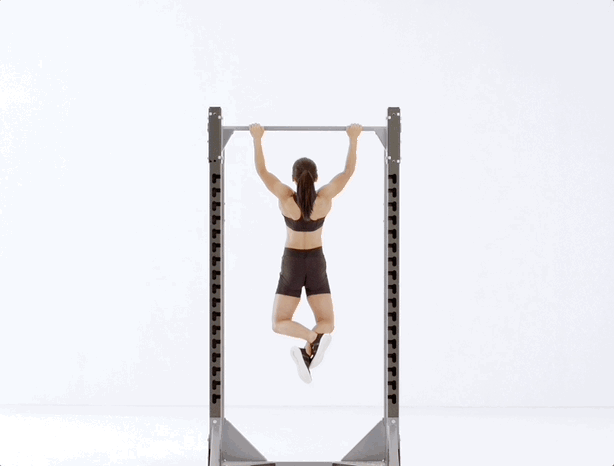

Wide-grip pull-ups reduce the involvement of the biceps and place more emphasis on the outer portion of the back muscles, particularly the latissimus dorsi. This variation is ideal for building width in the back and achieving a “V-taper” look.
- How to do it:
- Grasp the bar with an overhand grip, placing your hands about 1.5 times shoulder-width apart.
- Pull your body up toward the bar, focusing on engaging your lats.
- Lean back slightly so your chest approaches the bar, then slowly lower yourself.
- Perform 8-12 repetitions for 3-4 sets. Beginners can use resistance bands for assistance, aiming for 6-8 reps per set and 2-3 sets.
- Muscles worked: Upper and outer latissimus dorsi, teres major, posterior deltoids.
6. Eccentric Pull-Ups (Negative Pull-Ups)
Eccentric training focuses on the lowering phase of the movement, which is where the muscles experience the most growth. This exercise is ideal for building strength and endurance, even if you can’t yet perform a full pull-up.
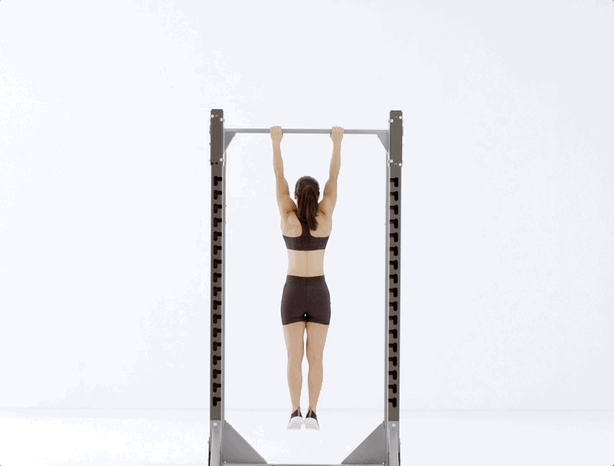
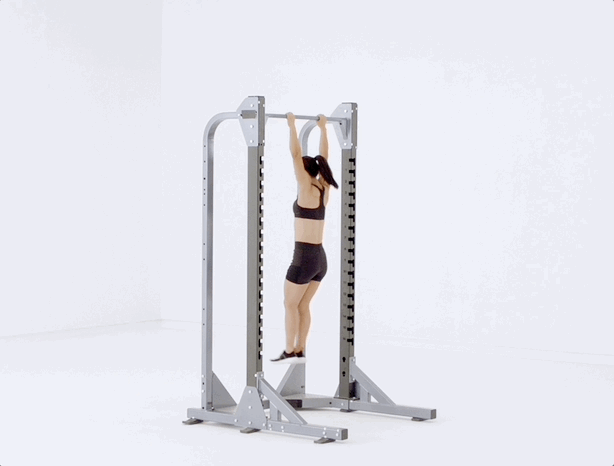
- How to do it:
- Jump or use a step to bring yourself to the top of the pull-up position.
- Slowly lower yourself down, taking 3-5 seconds to reach the bottom.
- Repeat for 6-8 repetitions, performing 2-3 sets. As you get stronger, aim for 8-10 reps per set and 3-4 sets.
- Muscles worked: Latissimus dorsi, biceps.
By incorporating these simple pull-up bar exercises into your daily routine, you can effectively combat the negative effects of prolonged sitting and improve your overall spinal health. Not only will you feel more energized throughout the day, but you’ll also build strength and improve your posture. Remember, consistency is key—start small and gradually increase the intensity of your workouts as you become more comfortable. Your back and neck will thank you!


